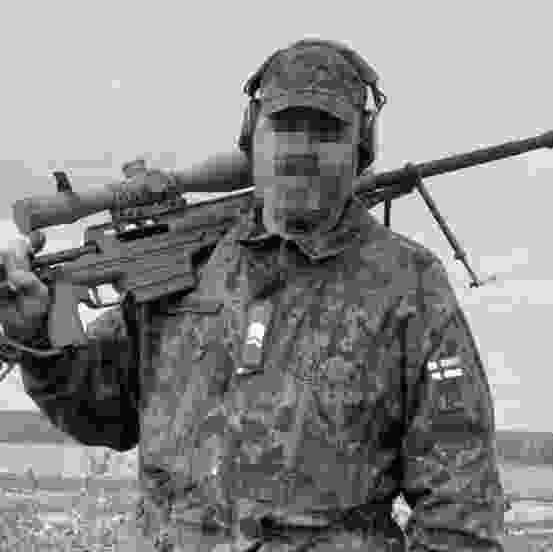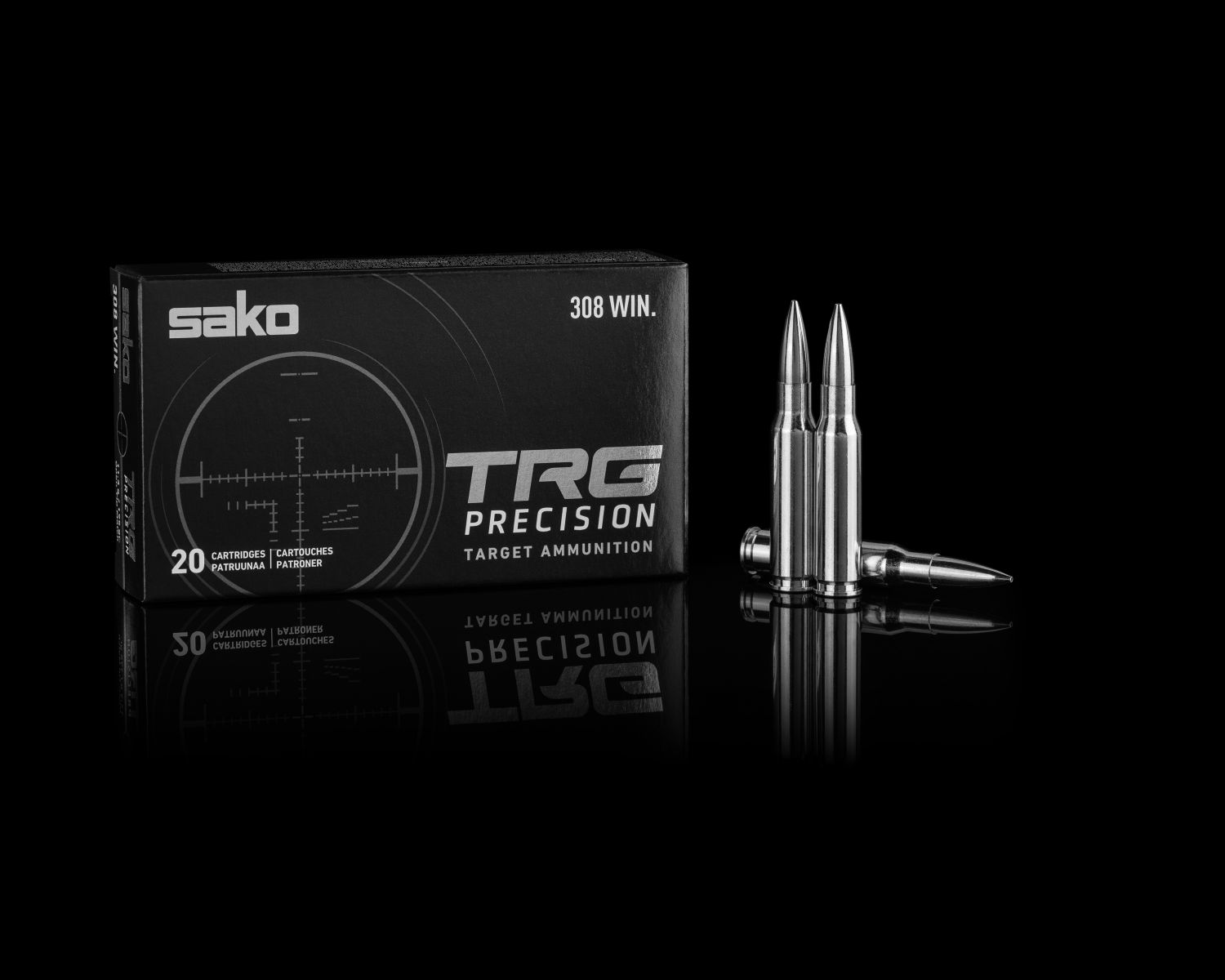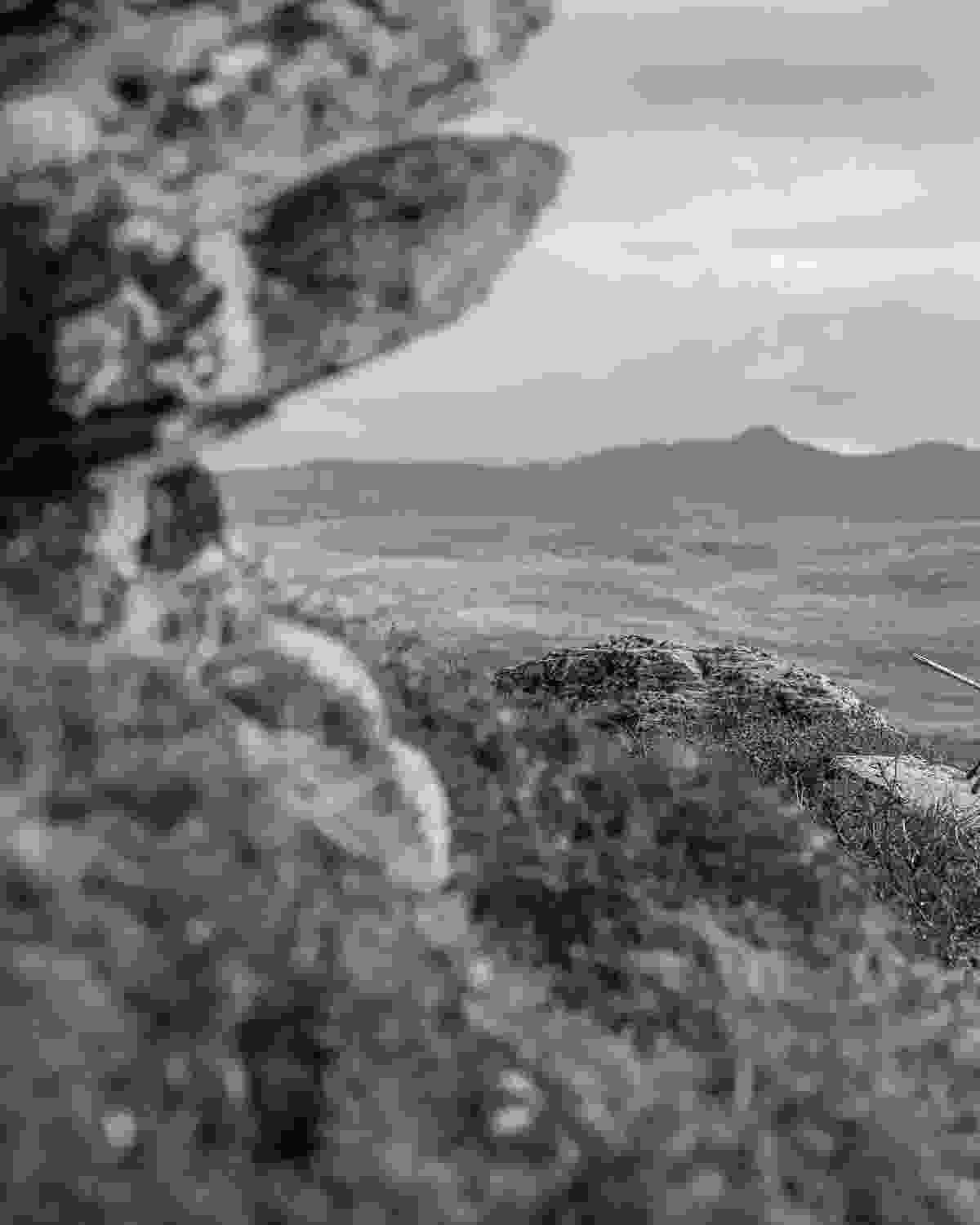

Mastering the art of uphill and downhill shooting
When a rifle enthusiast takes aim, they face a host of challenges that affect the trajectory of their bullet. The most significant of these are bullet drop and wind, with gravity exerting the greatest influence. In this article, we explore the fascinating world of ballistics and the factors that come into play when shooting at long distances.
Shooting from above and below
All rifle shooters know the basic challenges of ballistics. The two main forces that deflect a bullet from a straight trajectory are the bullet drop and the wind. Of the two, gravity has the greater effect of displacing the bullet; the bullet drops at a constant speed as the distance increases and in direct proportion to the time of flight. The second biggest problem in terms of impact is wind, an almost constant nuisance in practical outdoor shooting. The wind moves the bullet almost exclusively laterally, and even that deflection begins as soon as the bullet moves from the intermediate ballistic phase of the barrel muzzle into free flight. Many people have also heard of other phenomena such as rotational deviation, the Coriolis error, the magnus effect and the aerodynamic jump of a bullet. However, at typical hunting or range distances, their effect is insignificant. Problems only start or become significant at much longer shooting distances.

Initial situation
Shooting up and downhill is a problem for a few people, but for mountain hunters it is a familiar and normal issue to be corrected. However, the effect of the angle is only significant in terms of hitting the target in practice at relatively large angles or long distances. In the most common 100...300 m shooting, the angle of impact would require a firing position on the top of a mountain or, in law enforcement situations, on the roof of an apartment building.
Large shooting angles can also be ergonomically challenging. In the high mountains, there are no trees for temporary support, so you have to improvise a firing position using rocks, boulders or portable equipment. A backpack can be a functional temporary support and, in the best case, can been equipped with a high adjustable shooting support: tripod, bipod or monopod. The shooting position should also be particularly supportive in the face of weather challenges. A biting cold wind, cold fingers and the fatigue of a long hike make the need for good support even more pressing.
Situations can therefore arise, so It is worth bearing in mind how to correct them. The correction principle is simple and the rules of thumb easy to remember: The amount and direction of correction is always the same for both uphill and downhill shooting. The point of impact of a shot fired without correction is higher ‘when it should be’. The amount of deviation depends on the shooting angle and distance, but in practice not whether the angle is up or down, which may seem odd. As an extreme example, the same happens in a situation where you shoot exactly vertically, up or down: there is no need to correct the bullet's drop at all because the effect of gravity is exactly in the direction of the bullet's trajectory. So the bullet does not drop at all in relation to the barrel line, as it does when the bullet is horizontal. The principle is the same in up/down diagonal shooting, but the ‘rising’ effect of the bullet is less. The exact effect can be calculated easily and accurately with modern ballistics software, even with a simple mechanical protractor attached to the gun.
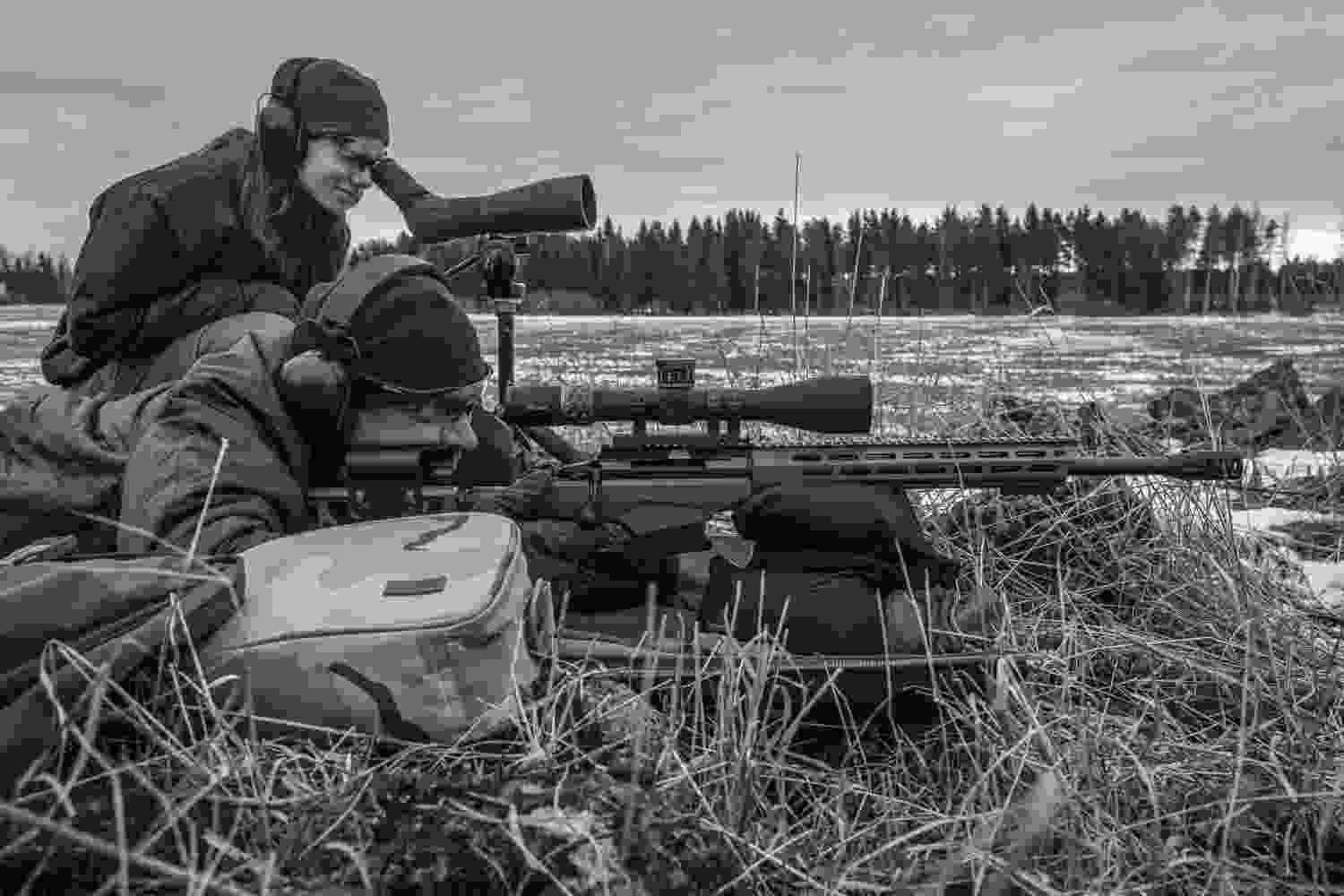
Calculation
There are two common ways to correct the shooting angle: smartphone ballistic apps or a direct correction factor.
In the case of apps, the shooting angle is measured or estimated first. This angle is entered into a program like the ‘Sako Ballistics’ phone app. The shooting angle is directly adjustable in the basic program screen, in addition to wind and distance. The program takes this into account and automatically reduces the number of clicks from the correction calculated for the set firing distance. The final corrected adjustment is placed directly on the sight’s elevation turret and the angle is corrected exactly right.
Another way is to take the angle into account as a correction factor for distance. The factor is exactly one when shooting horizontally, and less than one when shooting up or down. A mechanical ACI (angle cosine indicator) attached to a gun, displays the ballistic correction factor directly when aiming at the target. The shooter can verify the correction, for example ‘0.85’, by aiming at the target and looking at the ACI. If the sight has an adjustable "BDC/ASV" turret and marked metric distances, correction is easy without separate calculations or phone apps. The distance to the target is set based on the coefficient corrected by the ACI.
If the shooting angle is 45 degrees up or down, the distance correction factor is 0.7. In other words, if the distance to the target measured with a direct laser is 1000m, then at a firing angle of 45 degrees, the setting 700m is used in the elevation turret. Many laser range-finders with gyroscopes can calculate the same thing directly. In addition to the normal straight distance, the laser display shows the ballistic distance corrected by the angle factor.
Impact in practice
The factory-loaded muzzle velocity of a Sako TRG Precision 308 Win from a TRG M10 rifle is approximately 818 m/s. A rifle aimed at a distance of 100 m needs 14 x 0.1 mrad (1cm/100m) adjustment clicks up to 300 m.
If the target at 300m is on an incline that slopes up or down by 10 degrees, fewer than one less adjustment click is needed. The effect on the impact in the direction of elevation will be 2 cm, the impact of one elevation turret click being 3 cm at the same distance of 300 m.
If the gun had a mechanical ACI attached, it would show a correction factor of ‘0.98’ or ‘98’ for short, at a 10 degree angle of inclination. For a range of 300 m, a multiplier of 0.98 should be used. 300 m x 0.98 = 294 m. 294 m at a distance of 300 m and 10 degrees up/downhill would be the corrected range setting for the ballistic turret: the hit would be exactly in the middle of the table in terms of elevation. So the effect is not great at the angles most people shoot at, as long as the shooting distance is not too long. 10 degrees may sound like a small angle, but it is in fact a clear and steep slope for those used to flat ground.
A more challenging situation is mountain hunting where the shooting angle may be 45 degrees and the distance longer, for example 400 m. The same example gun/cartridge needs 24 x 0.1 mrad (1cm/100m) upward adjustment clicks when fired horizontally at 400m. 45 degrees uphill or downhill reduces the need for correction by half, to 12 sight clicks. As a ballistic distance, 400 m is equivalent to using 70% of the shooting distance compared to the horizontal: 400m x 0.7 = 280 m.
Shooting at steep angles can therefore be easier in a way because the bullet's drop is less. Ballistically and in terms of the bullet's drop alone, the situation is equivalent to shooting closer. So in practice, the shooter gets a free error budget for a distance estimation error. However, with the same bullet flight time, windage must still be taken into account in the same way and for a distance of 400 m. Also, the bullet deceleration is the same, i.e. the impact energy does not increase according to the new distance calculated by the angle factor.
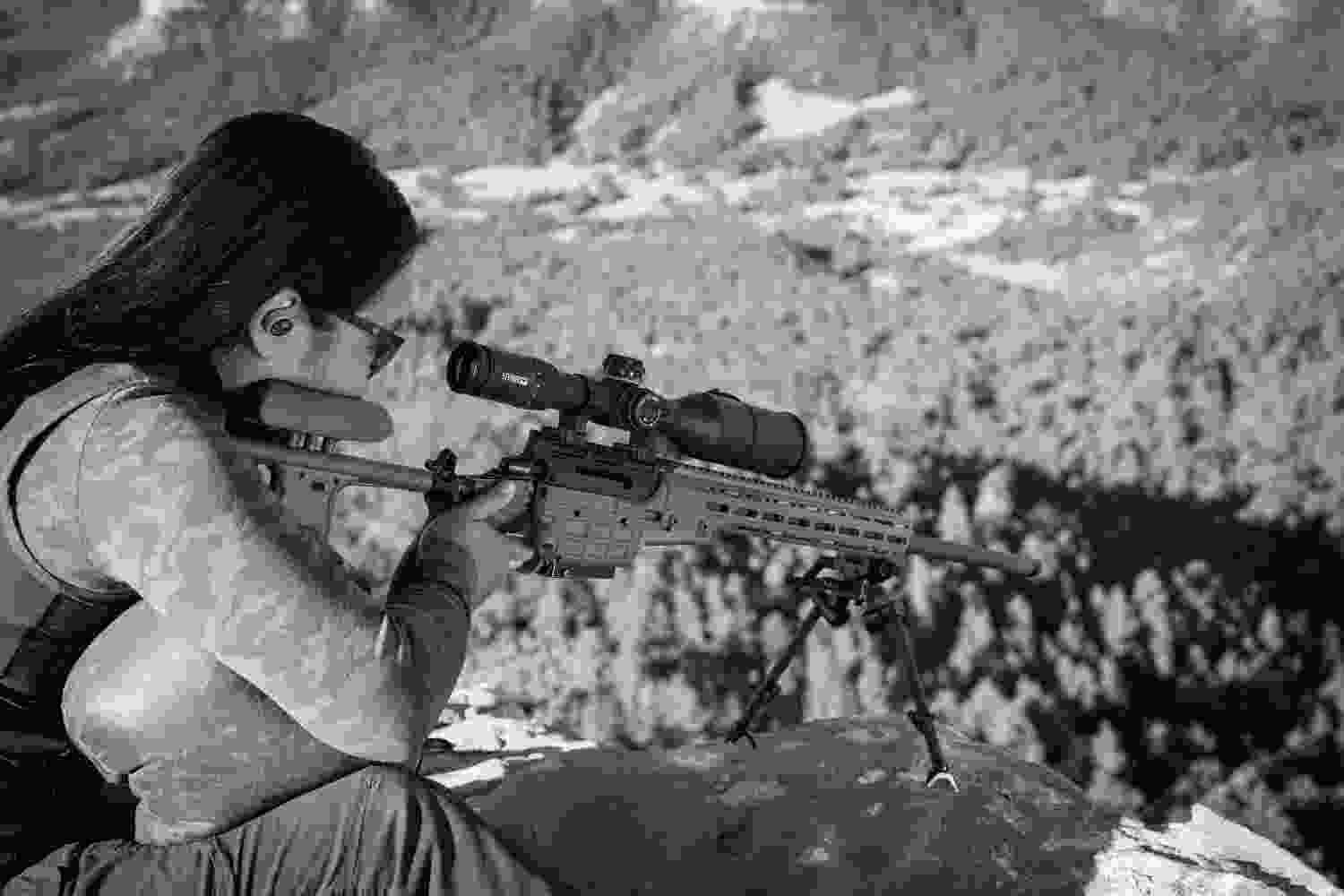
Special situations
The effect of the shooting angle is therefore easy to correct and the principle easy to internalize. There are many ways to compensate for the angle, and exact correction does not necessarily require calculations with smartphone apps. In practice, however, there may be situations where the rules of thumb do not apply: If the shooting angle is very steep, the corrected distance to be used can be less than 100 m, even at long actual shooting distances. If the rifle is aimed horizontally at a distance of 100m as is common practice, the use of a correction factor alone will result in a calculated error:
at a distance of 100 m, when aiming a rifle horizontally, the bullet flies an initial upward arc. Gravity will turn the bullet onto a downward curve at around 80 m, depending on the sight elevation, bullet and muzzle velocity.
The reason is the difference in height between the sight line and the barrel line: the barrel is typically 5-7cm below the sight line. To hit the target range, the bullet must be in an upward arc on the initial flight path. Gravity reverses the direction of the trajectory before the target and the bullet hits the 100 m aiming point in a descending arc.
If the shooting angle is steep enough, the simplified multiplier corrected range can be less than 100 m, even less than 50 m. Example: Calculated with a Sako TRG M10 and 11g/175gr Sako TRG Precision cartridge: a shot fired at a distance of 200 m in the mountains, at an angle of 65 degrees, has a ballistic range of 84 m (200 x 0.42). In this case, the distance of 84 m calculated by the multiplier should be used for a horizontal rifle aimed at 100 m. In reality, the point of impact would be too high.
Normally when shooting horizontally, an accurate correction of an 84 m range with a rifle aimed at 100 m would require about half a sight adjustment turret click, in practice, zero or one because the calculation software rounds the correction to a convenient round number of clicks. Similarly, a 200 m range would require five 0.1 mrad (1cm/100m) clicks upwards when shooting horizontally with a rifle aimed at 100m.
Even so, the same 200 m range at a steep 65 degree shooting angle requires an adjustment of five clicks in the opposite direction, i.e. down, compared to the zero setting for the targeted 100 m distance. The sight's elevation turret should be turned from zero point to under the zeroing point. In most cases, this is not possible because of the zero stops on the adjustment turrets. The correction must therefore be made by reticle aiming, or by aligning the sight adjustment turret at a distance of 100 m with 10 clicks ‘up’. In this case, downward adjustment axes are also available, despite the zero stop.
Other strange things can also happen at great angles and over long distances. For example, in military use in the mountains and at extreme distances with a 338 Lapua Magnum rifle, the difference in elevation between the firing position and the target can also cause a big difference in air pressure. When shooting downwards, the bullet will be pushed through much higher air pressure and therefore denser air towards the end of the trajectory. Bullet deceleration is therefore increasing and greater at the end of the trajectory. If the shooter measures the weather and calculates the trajectory of the shot and the sight settings based only on the firing location, the air pressure difference alone can cause an error of tens of centimeters in the elevation at the target end.
So there can be many different special situations but, with simple principles, the correction can be done accurately in virtually all cases.
Author: Jarno Lankila
For some, sport shooting is a hobby, for others a profession, and then there’s group of people for whom sport shooting is much more than that. Jarno is a sniper / sniper instructor, but his detailed bio will remain confidential. We have the privilege to have him as one of our guest authors
